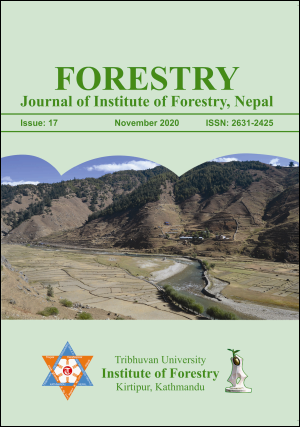Economics of Cinnamomum glaucescens (Nees.) Drury in Western Terai Region of Nepal: A Value Chain Perspective
DOI:
https://doi.org/10.3126/forestry.v17i0.33625Keywords:
Community forest, C. glaucescens, economic contribution, NTFP, value chainAbstract
This study was carried out in Chillikot village of Dang district to find out the economic contribution of Cinnamomum glaucescens to local economy and to document the major conservation threats for this species. Household survey (n=29), key informants interviews (n=5) and focus group discussions (n=3) were carried out to collect the data. This study reveals that about NPR 1.7 million (US$ 16,5002) have been contributed annually to local economy by 29 households from NTFPs including C. glaucescens berries collection business. Average annual income for each household was around US$ 569.19 from the species that contributes about 53% of the total annual household income. Value chain analysis showed that six different value chain actors were found involved in C. glaucescens business with maximum profit margin to wholesaler (US$ 1.66 kg-1) and minimum to village traders ( US$ 0.07 kg-1). Open access to the resource and poor functional linkage among the actors were identified as major limitations in the value chain of the products. Handing over the national forest as a community forest, linking the producers with processor through organized market channel has been recommended for future.
Downloads
Downloads
Published
How to Cite
Issue
Section
License
© Tribhuvan University, Institute of Forestry




